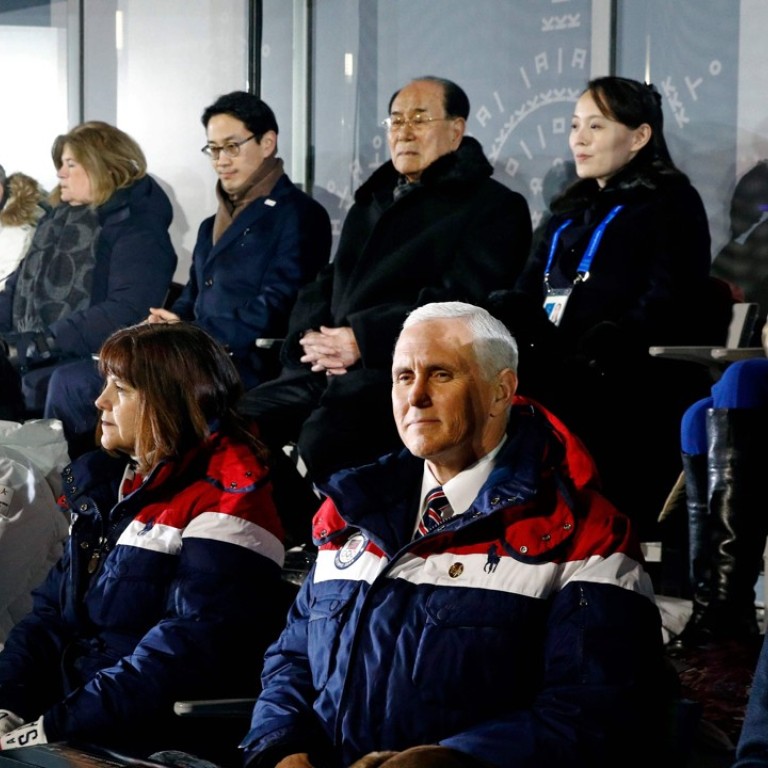
US must drop hardline stance in name of peace
Sport has taken second place to diplomacy at the Pyeongchang Winter Olympics but, despite all the gestures between the two Koreas, Washington will have the final say
A handwritten offer of a summit by North Korean leader Kim Jong-un, delivered by his visiting younger sister Kim Yo-jong at a meeting with South Korean President Moon Jae-in, was the highlight of a series of symbolic gestures made since the Games began on Friday.
The two sides marched under the unification flag at the opening ceremony, formed a joint women’s ice hockey team and persuaded the United Nations to temporarily waive sanctions and to approve hundreds of representatives from the North, including athletes, cheerleaders and an art troupe.
However, reconciliation and peace on the peninsula will remain a dream while the United States stands in the way.
Moon held four meetings with Kim Yo-jong and the North Korean delegation, showing the desire for relations to move positively forward. But the South Korean leader would not commit to the offer of a summit, instead saying that the “right conditions” had to first be in place.
Those conditions are as much about convincing domestic political opponents of the benefits as getting military ally Washington on board. The administration of US President Donald Trump rejects such a suggestion, maintaining that talks are not an option until the North ends its nuclear and missile programmes.
The refusal of US Vice-President Mike Pence to meet the North Korean delegation or even acknowledge its members during the opening ceremony said much about his country’s position. The US is at the root of the problem, its 30,000 troops in South Korea and joint military exercises being perceived as a threat by Pyongyang and a reminder that no peace treaty has been signed to formally end the Korean war.
Many in the US have described the actions of the North as propaganda and an effort to drive a wedge between Seoul and Washington.
Japan, US standing firm on North Korea despite Pence’s olive branch
Sceptics question the sincerity of Pyongyang given that two previous summits between the leaders of the North and South did nothing to prevent the development of nuclear bombs and missiles that now threaten the South and the US mainland. Furthermore, agreements that have been signed have been repeatedly broken.
The North is as adamant that it will not give up its nuclear programme as the US is that talks cannot take place unless the weapons are scrapped. Inter-Korean dialogue will improve understanding and perhaps trust, but cannot bring peace. That can happen only if the US drops its hardline stand towards Pyongyang.

